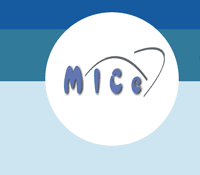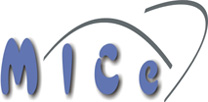 |
||||||||
 |
||||||||
|
|
||||||||
 |
 |
|||||||
THE TORONTO CENTRE FOR PHENOGENOMICS
MOUSE IMAGING CENTRE |
 |
|
|
4D Atlas of the Mouse Embryo (E11.5 - E14.0)After more than a century of research, the mouse remains the gold-standard model system, for it recapitulates human development and disease while being quickly and highly tractable to genetic manipulations. Foundational to the power and success of using a mouse model is the ability to accurately stage embryonic mouse development. Past staging systems were limited by the technologies of the day, such that only surface features, visible with a light microscope, could be recognized and used to define stages. With the advent of high-throughput 3D imaging tools that capture embryo morphology in microscopic detail, we now present the first 4D atlas staging system for mouse embryonic development using optical projection tomography and image registration methods. By tracking 3D trajectories of every anatomical point in the mouse embryo from E11.5 - E14.0, we established the first 4D atlas comprised from ex-vivo 3D mouse embryo reference images. The resulting 4D atlas is comprised of 51 interpolated 3D images in this gestational range, resulting in a temporal resolution of 72 minutes. From this 4D atlas, any mouse embryo image can be subsequently compared and staged at the global, voxel, and/or structural level. Assigning an embryonic stage to each point in anatomy allows for unprecedented quantitative analysis of developmental asynchrony among different anatomical structures in the same mouse embryo. This comprehensive developmental dataset offers developmental biologists a new, powerful staging system that can identify and compare differences in developmental timing in wild-type embryos and shows promise for localizing deviations in mutant development. The 51 individual mouse embryo atlases are available as 3D TIFF stacks here: An open source viewer that can be used to examine the data is ImageJ ( http://imagej.net/). We currently use version 1.46a on our system. Here are example images of the E11.5 and E13.0 embryo atlas loaded in ImageJ:  
|
|
© 2004 The Centre for Phenogenomics |
|
 Back to Mouse Atlas
Back to Mouse Atlas